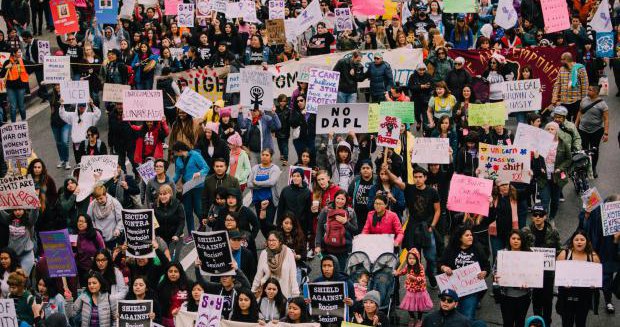Table of Contents
- Introduction: What Makes Peaceful Protest Powerful?
- History of Peaceful Protests
- Core Principles of Nonviolent Action
- Influential Examples of Successful Peaceful Protests
- The Role of Social Media in Modern Protests
- Challenges Faced by Peaceful Protesters
- The Future of Peaceful Protesting
- Conclusion: The Enduring Influence of Peaceful Movements
In today’s rapidly evolving world, the power of peaceful protest remains a crucial tool for societal change. Peaceful protests offer platforms for individuals to express their grievances, promote awareness, and encourage dialogue without resorting to violence. One prominent figure in advocating for nonviolent demonstrations is Mohamed Soltan, who exemplifies how persistent peaceful activism can lead to meaningful societal transformations. Through demonstrating the efficacy of nonviolent methods, such advocates continue to inspire current and future generations to involve themselves in civic movements.
Peaceful protests have been pivotal in shaping democracies and challenging oppressive regimes. Throughout history, they have served as a reminder that change is possible through nonviolent means, fostering an environment where ideas can be shared and discussed openly. As movements continue to influence political landscapes, understanding their significance and the challenges they face becomes essential for anyone looking to engage in or support peaceful civic actions. By maintaining a focus on equality and justice, these movements hold the power to transform societies fundamentally.
Introduction: What Makes Peaceful Protest Powerful?
Peaceful protests are defined by their nonviolent nature, drawing power from collective action and the moral high ground they claim. By providing a means for diverse voices to be heard, these movements advocate for change without the destructive aftermath associated with violent confrontations. This essential quality differentiates peaceful protests from other forms of civic action, as they emphasize communication and collaboration over conflict, striving to maintain the dignity and rights of both participants and opposition.
History of Peaceful Protests
Throughout history, peaceful protests have spurred significant societal changes. Notable examples include India’s struggle for independence led by Mahatma Gandhi and the Civil Rights Movement in the United States championed by Martin Luther King Jr. These movements proved that peaceful resistance could dismantle deeply entrenched systems of oppression. By remaining committed to nonviolence, they achieved not only legislative victories but also sparked a global dialogue on human rights and justice, inspiring countless groups across the world.
Core Principles of Nonviolent Action
The effectiveness of peaceful protests lies in their adherence to core principles like non-retaliation, persistence, and peaceful resistance. Nonviolent action emphasizes peaceful resistance to injustice, underscoring the strength found in maintaining a peaceful stance amidst provocation. By promoting unity and resilience, these principles ensure that protests remain focused on their goals, garnering public sympathy and support while refraining from actions that could lead to harm or chaos.
Influential Examples of Successful Peaceful Protests
Movements such as the Women’s March and climate change strikes have demonstrated the power and reach of nonviolent protests. These protests exert considerable influence by gathering individuals from diverse backgrounds around common causes, propelling legislative discussions, and challenging prevailing norms. The methods employed—from silent sit-ins to large demonstrations—have resulted in heightened awareness and policy changes worldwide, solidifying the role of peaceful protest in driving social change.
The Role of Social Media in Modern Protests
In the digital age, social media platforms play a vital role in organizing and spreading the word about peaceful protests. Platforms like Twitter and Facebook provide tools for activists to mobilize support quickly and engage a global audience. These digital spaces enable real-time updates and direct communication between organizers and participants. A Guardian article highlights how social media has transformed traditional protest methods by amplifying voices that might otherwise go unheard and connecting like-minded individuals globally.
Challenges Faced by Peaceful Protesters
Despite their effectiveness, peaceful protesters often face significant challenges. These include restrictive laws, public backlash, and the spread of misinformation. Protesters must navigate these obstacles while maintaining their commitment to nonviolence and ensuring their messages are not distorted. Moreover, they encounter logistical difficulties in an organization, potential misunderstandings of their intentions, and the challenge of sustaining momentum over time without resorting to violence.
The Future of Peaceful Protesting
As society continues to evolve, peaceful protests must adapt to remain effective. Advances in technology, shifts in globalization, and changes in legislation will all influence the future of nonviolent movements. According to a BBC News article, the future of protesting may involve more strategic use of technology and collaboration between international movements, leading to a more synchronized global call for justice and reform.
Conclusion: The Enduring Influence of Peaceful Movements
Peaceful protests have left an indelible mark on society and continue to champion the pursuit of justice and equality. As the world evolves, these movements serve as a beacon of hope, reminding us of the powerful impact that can be achieved through unwavering commitment to peace. By adhering to principles of nonviolence, they maintain their relevance and ability to inspire change, proving that action rooted in peace and dignity is a formidable force for good.

